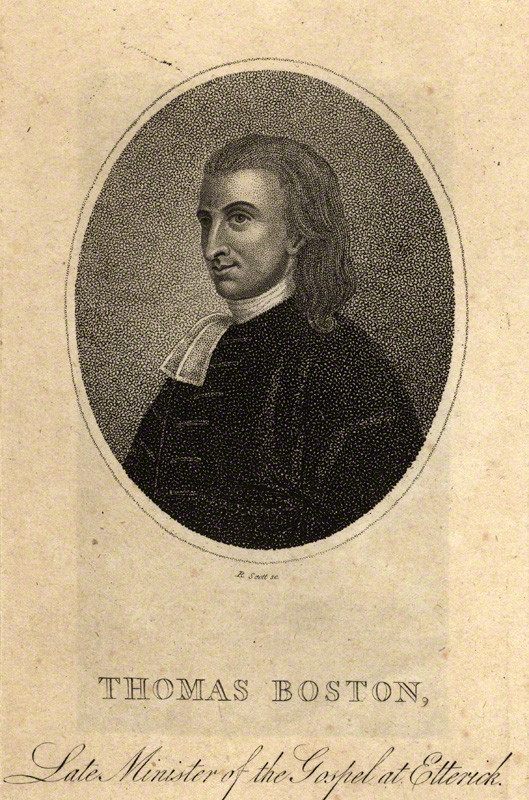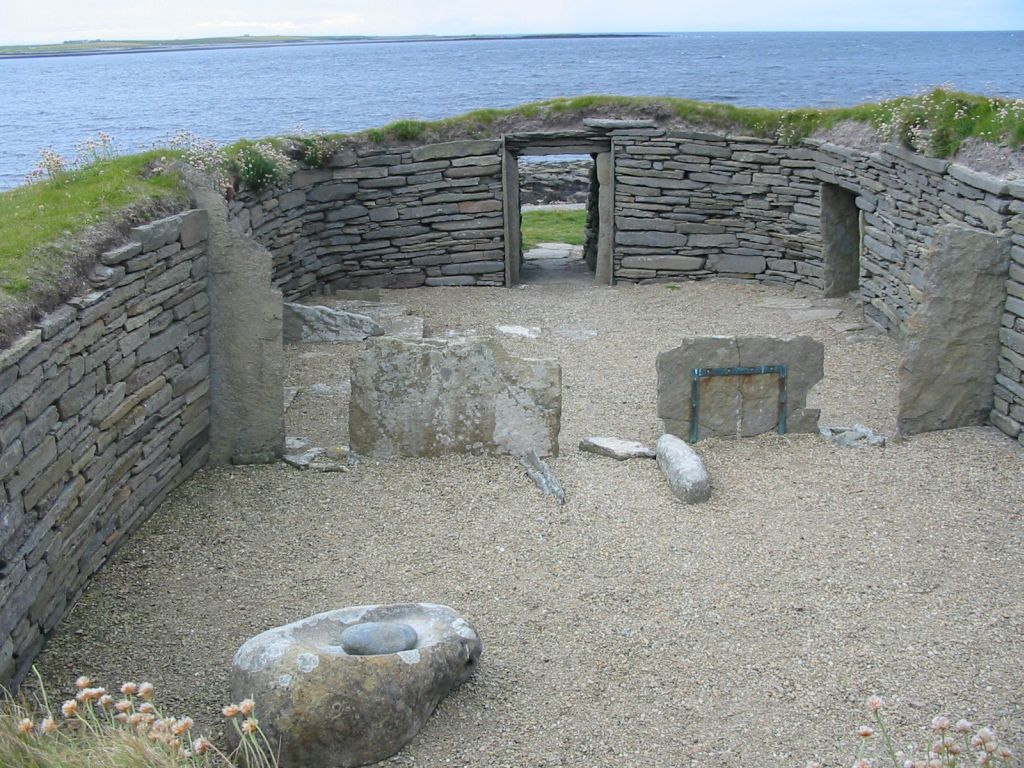|
Auchterarder Creed
The Auchterarder Creed was the pejorative term given to a declaration formulated by the Church of Scotland presbytery in Auchterarder in 1717. The declaration argued that it was unorthodox to teach that one must repent prior to coming to Christ, meaning that the Auchterarder Presbytery saw repentance as a result of being in Christ instead of an instrumental requirement for salvation. The creed was condemned by the General Assembly of the Church of Scotland in 1717, saying that one could only be saved after a person had gotten rid of their sins through repentance. The condemnation was opposed by Thomas Boston, who in response recommended the reading of the Marrow of Modern Divinity The Marrow of Modern Divinity was a book written in 1645 by Edward Fisher and later reprinted with the notes of Thomas Boston, the book ignited the Marrow controversy The Marrow Controversy was a Scottish ecclesiastical dispute occasioned by ..., having similar doctrines to the Auchterarder. Th ... [...More Info...] [...Related Items...] OR: [Wikipedia] [Google] [Baidu] |
Church Of Scotland
The Church of Scotland ( sco, The Kirk o Scotland; gd, Eaglais na h-Alba) is the national church in Scotland. The Church of Scotland was principally shaped by John Knox, in the Scottish Reformation, Reformation of 1560, when it split from the Catholic Church and established itself as a church in the reformed tradition. The church is Calvinist Presbyterian, having no head of faith or leadership group and believing that God invited the church's adherents to worship Jesus. The annual meeting of its general assembly is chaired by the Moderator of the General Assembly of the Church of Scotland. The Church of Scotland celebrates two sacraments, Baptism and the Lord's Supper in Reformed theology, Lord's Supper, as well as five other Rite (Christianity), rites, such as Confirmation and Christian views on marriage, Matrimony. The church adheres to the Bible and the Westminster Confession of Faith, and is a member of the World Communion of Reformed Churches. History Presbyterian tra ... [...More Info...] [...Related Items...] OR: [Wikipedia] [Google] [Baidu] |
Auchterarder
Auchterarder (; gd, Uachdar Àrdair, meaning Upper Highland) is a small town located north of the Ochil Hills in Perth and Kinross, Scotland, and home to the Gleneagles Hotel. The High Street of Auchterarder gave the town its popular name of "The Lang Toun" or Long Town. The modern town is a shopping destination with a variety of independent shops and cafes. History The name "Auchterarder" derives from the Scottish Gaelic roots ''uachdar'', ''àrd'', and ''dobhar''; it means ‘upland of high water.’ Auchterarder Castle stood to the north of the town in the area now known as Castleton. It is said to have been a hunting seat for King Malcolm Canmore in the 11th century and was visited by King Edward I in 1296. It was made ruinous in the 18th century and only fragments remained at the end of the 19th century. In the Middle Ages, Auchterarder was known in Europe as 'the town of 100 drawbridges', a colourful description of the narrow bridges leading from the road level across ... [...More Info...] [...Related Items...] OR: [Wikipedia] [Google] [Baidu] |
General Assembly Of The Church Of Scotland
The General Assembly of the Church of Scotland is the sovereign and highest court of the Church of Scotland, and is thus the Church's governing body.''An Introduction to Practice and Procedure in the Church of Scotland'' by A. Gordon McGillivray, 2nd Edition (2006 updated text) It generally meets each year and is chaired by a Moderator elected at the start of the Assembly. Church courts As a Presbyterian church, the Church of Scotland is governed by courts of elders rather than by bishops. At the bottom of the hierarchy of courts is the Kirk Session, the court of the parish; representatives of Kirk Sessions form the Presbytery, the local area court. Formerly there were also Synods at regional level, with authority over a group of presbyteries, but these have been abolished. At national level, the General Assembly stands at the top of this structure. Meetings General Assembly meetings are usually held in the Assembly Hall on the Mound, Edinburgh. This was originally buil ... [...More Info...] [...Related Items...] OR: [Wikipedia] [Google] [Baidu] |
Thomas Boston
Thomas Boston (17 March 167620 May 1732) was a Scottish Presbyterian church leader, theologian and philosopher. Boston was successively schoolmaster at Glencairn, and minister of Simprin in Berwickshire, and Ettrick in Selkirkshire. In addition to his best-known work, ''The Fourfold State'', one of the religious classics of Scotland, he wrote an original little book, ''The Crook in the Lot'', and a learned treatise on the Hebrew points. He also took a leading part in the Courts of the Church in what was known as the "Marrow Controversy," regarding the merits of an English work, ''The Marrow of Modern Divinity'', which he defended against the attacks of the "Moderate" party in the Church. Boston, if unduly introspective, was a man of singular piety and amiability. His autobiography is an interesting record of Scottish life, full of sincerity and tenderness, and not devoid of humorous touches, intentional and otherwise. Life He was born at Duns. His father, John Boston, and his ... [...More Info...] [...Related Items...] OR: [Wikipedia] [Google] [Baidu] |
Marrow Of Modern Divinity
The Marrow of Modern Divinity was a book written in 1645 by Edward Fisher and later reprinted with the notes of Thomas Boston, the book ignited the Marrow controversy The Marrow Controversy was a Scottish ecclesiastical dispute occasioned by the republication in 1718 of ''The Marrow of Modern Divinity'' (originally published in two parts in London in 1645 and 1649 by "E. F.", generally believed to be a pseud .... The book is divided into three sections which are called "The Law of Works, The Law of Faith and The Law of Christ" is a dialogue with four characters, which are: an antinomian, a legalist, a minister of the gospel and a new Christian. Fisher attempts by using the dialogue of these characters to describe the gospel from errors. The book is centered around the law-gospel distinction. See also Auchterarder Creed References External links * {{librivox book , title=Marrow of Modern Divinity, author=Fisher 17th-century books ... [...More Info...] [...Related Items...] OR: [Wikipedia] [Google] [Baidu] |
Marrow Controversy
The Marrow Controversy was a Scottish ecclesiastical dispute occasioned by the republication in 1718 of ''The Marrow of Modern Divinity'' (originally published in two parts in London in 1645 and 1649 by "E. F.", generally believed to be a pseudonym for Edward Fisher, a lay theologian of the seventeenth century). The work consists of religious dialogues which discuss the doctrine of the atonement and aim to guide the reader safely between Antinomianism and Neonomianism. The dispute involved two parties, being the Marrow Brethren and the General Assembly. The first event to ignite the Marrow Controversy was the declaration of the Presbytery in Auchterarder, that said it was unorthodox to say a person must repent of their sins to be justified. History In 1700, while making a pastoral visit in the small country parish of Simprin, in the course of his work as a Church of Scotland minister, Thomas Boston saw and borrowed a copy of ''The Marrow of Modern Divinity''. He greatly ap ... [...More Info...] [...Related Items...] OR: [Wikipedia] [Google] [Baidu] |
18th Century In Scotland
The recorded begins with the arrival of the Roman Empire in the 1st century, when the Roman province, province of Roman Britain, Britannia reached as far north as the Antonine Wall. North of this was Caledonia, inhabited by the ''Picti'', whose uprisings forced Rome's legions back to Hadrian's Wall. As Rome finally Roman withdrawal from Britain, withdrew from Britain, Gaels, Gaelic raiders called the ''Scoti'' began colonising Western Scotland and Wales. Prior to Roman times, prehistoric Scotland entered the Neolithic Era about 4000 BC, the Bronze Age about 2000 BC, and the Iron Age around 700 BC. The Gaelic kingdom of Dál Riata was founded on the west coast of Scotland in the 6th century. In the following century, History of Christianity in Ireland, Irish missionaries introduced the previously Pictish religion, pagan Picts to Celtic church, Celtic Christianity. Following Saxon England, England's Gregorian mission, the Pictish king Nechtan mac Der-Ilei, Ne ... [...More Info...] [...Related Items...] OR: [Wikipedia] [Google] [Baidu] |
18th-century Controversies
The 18th century lasted from January 1, 1701 (Roman numerals, MDCCI) to December 31, 1800 (Roman numerals, MDCCC). During the 18th century, elements of Age of Enlightenment, Enlightenment thinking culminated in the American Revolution, American, French Revolution, French, and Haitian Revolution, Haitian Revolutions. During the century, History of slavery, slave trading and human trafficking expanded across the shores of the Atlantic Ocean, Atlantic, while declining in Russian Empire, Russia, Qing dynasty, China, and Joseon, Korea. Revolutions began to challenge the legitimacy of monarchical and aristocratic power structures, including the structures and beliefs that Proslavery, supported slavery. The Industrial Revolution began during mid-century, leading to radical changes in Society, human society and the Natural environment, environment. Western historians have occasionally defined the 18th century otherwise for the purposes of their work. For example, the "short" 18th cen ... [...More Info...] [...Related Items...] OR: [Wikipedia] [Google] [Baidu] |
History Of Christianity In Scotland
The history of Christianity in Scotland includes all aspects of the Christianity in the region that is now Scotland from its introduction up to the present day. Christianity was first introduced to what is now southern Scotland during the Roman occupation of Britain, and is often said to have been spread by missionaries from Ireland in the fifth century and is much associated with St Ninian, St Kentigern (perhaps better known as St Mungo) and St Columba, though “they first appear in places where churches had already been established”. The Christianity that developed in Ireland and Scotland differed from that led by Rome, particularly over the method of calculating Easter, and the form of tonsure until the Celtic church accepted Roman practices in the mid-seventh century. Christianity in Scotland is often said to have been strongly influenced by monasticism, with abbots being more significant than bishops, although both Kentigern and Ninian were bishops. “It is impossible ... [...More Info...] [...Related Items...] OR: [Wikipedia] [Google] [Baidu] |


.jpg)


